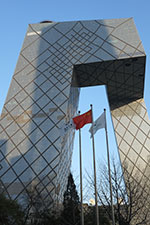
US Extra-territorial Jurisdiction Hinges on the Dominance of the US Dollar, So US Global Leverage Will Persist Until the US Dollar Is De-throned
The power to print a nation’s currency is one of the greatest powers of any government, but the power to print to the dominant global currency is perhaps the greatest power any government can possess. [1] This immense power is currently in the hands of the US, and it has weaponized the dominance of the US dollar to enforce key elements of its geopolitical policy preferences on the rest of the world.
The aggressive use by the US of unilateral secondary sanctions has spurred the adoption of a range of counter-measures by US friends and foes alike in an attempt to blunt the extra-territorial impact of these secondary sanctions. To be effective, however, such counter-measures must be able to shield non-US companies from the severe penalties that the US may impose for non-compliance.
As we have seen [2], blocking statutes alone have generally proven to be paper tigers, more political posturing than an effective defense. China may be in a better position to use counter-measures in a more holistic manner to push back against US perceived overuse of sanctions, but this will require a high degree of tactical finesse in order not to have a chilling effect on foreign investment or give rise to other unintended consequences.
More fundamentally, unless the dominance of the US dollar in international transactions is eroded, the US will be able maintain its current stranglehold on the global financial system, rendering all counter-measures ineffective. All currencies eventually die or devalue, but the US dollar remains dominant with no signs of faltering any time soon.
However, the US position is not impervious to attack, and governments and experts around the world are actively exploring a range of options to restore more balance to the current asymmetrical global financial system which currently works disproportionately to the unilateral advantage of the US.
Neutralizing the Threat of the “Nuclear Option”
One of the areas of potential vulnerability in the current US position of dominance, which various US trading partners are assessing, relates to shoring up the independence of the existing global payment infrastructure to remove or reduce the severity of the threat of US deployment of the equivalent of weapons of mass economic destruction.
The massive power of the US arsenal of economic sanctions can be illustrated by the case of Macau-based Banco Delta Asia (BDA). In 2005 US Treasury officials designated BDA as a “primary money laundering concern” under the US Patriot Act based on suspicions that BDA had engaged in money laundering and counterfeiting on behalf of North Korea. [3] By being so designated, the bank was cut off from the US and global financial systems.
The fallout was immediate and dramatic. The move sparked a run on the bank, and other regional banks halted dealings with BDA, worried that they too could become targets of US sanctions and be barred from the international banking system. Finally, Macau authorities took control of the bank to conduct its own investigation. [4]
Over the last 20 years, the US Treasury has designated more than a dozen banks, as well as the banking systems of Myanmar, Nauru and Ukraine, as being “primary money-laundering concerns” and has ordered US banks to sever ties to such foreign banks or banking systems on five occasions. [5] One such instance involved the Bank of Dandong and two other smaller Chinese banks, also for allegedly facilitating transactions with North Korea. In each case, this action was viewed as the financial equivalent of a corporate “death penalty.”
To date all of the banks so sanctioned have been relatively small, but that does not tell the entire story. US courts have found three large Chinese banks, the Bank off Communications, China Minsheng Bank and Shanghai Pudong Development Bank, in contempt for failure to comply fully with subpoenas in connection with a US Treasury investigation into transactions conducted by Minzheng International Trading Limited, which could put the banks at risk of being barred from access to the US financial system.
Moreover, as recounted in Part 2 in this series, the US cut Iranian banks off from access to SWIFT, and has aggressively pursued criminal actions against numerous global banks for sanctions violations, all with the implicit threat that if the banks failed to agree to a plea deal or deferred prosecution agreement (DPA), they too could be cut off from the US and global financial systems. [7]
More ominously, in 2014 and 2015 the US and its European allies threatened to disconnect Russia from SWIFT, [7] and in 2017, US Treasury Secretary Steven Mnuchin made a similar threat to cut China off from the global financial system if it did not follow through with respect to UN sanctions against North Korea. [8] More recently, the European Parliament passed a resolution to the effect that Russia should be cut off from SWIFT if it invaded Ukraine. [9]
If disconnecting small banks from the US and international financial system can be deemed to be a financial “death penalty,” then denying access to SWIFT to a major country like Russia or China can only be considered to the economic equivalent of “going nuclear.” Russian officials have repeatedly stated that they would consider being barred from SWIFT as a “declaration of war” [10] that would have severe consequences.
Strengthening the Independence of SWIFT
The EU’s threat to weaponize access to the SWIFT network is somewhat ironic. In the wake of the Trump administration’s reimposing secondary sanctions on EU companies in respect of deals with Iran, the European Council on Foreign Relations (ECFR) identified that the disproportionate influence of the US over SWIFT was a key area of risk exposure for EU companies and proposed that the EU Member States should take coordinated action to protect the independence of SWIFT. [11]
Given SWIFT’s background and governance, it is doubly ironic that EU officials would feel the need to take steps to reduce US control over the global payment network. SWIFT (full name, the Society for Worldwide Interbank Financial Telecommunication) is a cooperative company organized under Belgian law and is overseen by the G-10 central banks (Belgium, Canada, France, Germany, Italy, Japan, The Netherlands, United Kingdom, United States, Switzerland, and Sweden), as well as the European Central Bank, with its lead overseer being the National Bank of Belgium. [12]
SWIFT dominates global payment messaging to such an extent that there is no viable alternative in place. Similarly, notwithstanding the decline in the US share of global trade, the US dollar continues to dominate cross-border transactions, which are facilitated over the SWIFT network. But at the same time. SWIFT is so fully integrated into the US banking network, through which all US dollar payments ultimately are processed, that if the US cuts off SWIFT from US dollar transaction processing, then SWIFT in large measure shuts down.
To date, the US has used its dominant market and political position to compel SWIFT to do its bidding, but the ECFR proposes to have the EU Member States call on SWIFT to turn the tables on the US and use the leverage of the mutual interdependence of SWIFT and the US banking system against the US. One approach floated by the ECFR is for the EU to adopt a stronger version of the current EU Blocking Statute specifically directed at preventing SWIFT or other financial institutions or mechanisms from complying with US secondary sanctions to ensure that individual banks and entire banking systems cannot be disconnected from SWIFT. By taking such a “defiant” position, the EU could test the resolve of the US to press ahead with draconian secondary sanctions involving denial of access to SWIFT. [13]
The ECFR also suggested two other more aggressive approaches. The first would be to nationalize SWIFT, or at least threaten to do so. Alternatively, the EU could go to the IMF to seek to protect SWIFT against unilateral interference.
But all of these proposals are raised by the ECFR in the context of reducing EU vulnerability to US abuse of its leverage over SWIFT in ways deemed detrimental to the EU. Now that the EU is once again threatening to use discontinuance of access to SWIFT to penalize its geopolitical adversaries, it is not clear that any of these ECFR proposals will garner support as a practical matter.
Establishing Alternatives to SWIFT and the US banking System
Promoting the independence of SWIFT is only a first step in the effort to minimize the extra-territorial impact of US secondary sanctions. SWIFT is a financial information messaging service that facilitates international payments, but it does not handle the currency settlement and clearance aspects of the transactions.
Because payment transactions outside of the US are predominantly denominated in US dollars, the currency clearance will still typically be completed through correspondent banks in the US, thereby triggering US assertion of jurisdiction. Consequently, in order to reduce the risk that US dollar international payments may be subject to the potential impact of US sanctions, the connection to the US banking system must be severed.
One alternative is to use the Clearing House Automated Transfer System (CHATS) in Hong Kong. CHATS was set up in 2000 to settle transactions in Hong Kong dollars, US dollars, Euros and Yuan, and is used by more than 200 participating financial institutions. Through correspondent bank relationships, transaction settlement in the four supported currencies can be performed for the entire Asia region and beyond.
The US dollar settlement system is the oldest and most important of the four currency settlement systems operated by CHATS. Parties in Asia can use CHATS to complete payment transactions in real time without potential delays due to different time zones, and some legal scholars have argued that clearing US dollar payments through CHATS could insulate the non-US parties from US long-arm jurisdiction since the payments are settled in Hong Kong and thus do not touch the US banking system. [14]
However, some Chinese banking experts are of the view that using CHATS may still not prove to be a suitable alternative US dollar clearance channel for sanctions risk reduction purposes in all cases. Because CHATS is operated by global banks with high levels of exposure to the US banking system, they may be more conservative about processing US dollar payments through CHATS which are potentially problematic to any degree from a US perspective. Moreover, in some cases involving US dollar payments with no other US nexus, US authorities reportedly have claimed jurisdiction on the grounds that the US dollars initially originated from the US.
Even with these important caveats, the CHATS US dollar clearance system has proven to be quite popular. In 2019, the system on average settled more than 570,000 transactions per month with an average monthly value of nearly US$855 billion. These figures represent growth of 16.3% in terms of average monthly transaction volumes and 20.5% in terms of average monthly values compared to 2017. However, the US dollar transaction volume on the CHATS platform still represents only a miniscule share of the total US dollar settlement volume in the US.
Consequently, in order to more fully hedge against the potentially devastating economic fallout from potential disconnection from SWIFT, and from the over-dependence on the US dollar and US dollar clearance in the US, Russia and China have been developing their own alternative payment systems, and are looking at ways to integrate these platforms globally.
The Russian payment platform is SPFS (the acronym is taken from the Russian name, which can be translated as System for Transfer of Financial Messages), which has been in development since 2014, after the US first threatened to disconnect Russia from the SWIFT system. Russian officials have suggested that SPFS is now robust enough to insulate it from disruptions should it in fact be banned from SWIFT, boasting in 2018 that “The number of users of our internal financial messages’ transfer system is now greater than that of those using SWIFT.” [15]
Notwithstanding Russian officials’ public optimism, the SPFS system faces significant challenges: Transaction costs on SPFS originally were much higher than for SWIFT (although SPFS fees were reduced in 2018), but more importantly the system can be used primarily only in Russia. In the last couple of years Russia has reached agreements to link SPFS to other countries payment systems in China, India, Iran, as well as the countries inside the Eurasian Economic Union, which plan to use SPFS directly. At the end of 2020, 23 foreign banks from Armenia, Belarus, Germany, Kazakhstan, Kyrgyzstan and Switzerland had connected to the SPFS.
By comparison, more than 11,000 SWIFT member institutions in more than 200 countries and territories sent over 35 million transactions per day through the SWIFT network in 2020. [16] Consequently, the SPFS system is seen by many observers as a last resort, rather than as a replacement for the SWIFT network. [17]
Although China started to build its own payment system at roughly the same time as Russia did, China is much further along. China introduced the Cross-Border Interbank Payment System (CIPS) platform in 2015. CIPS is the international complement to China’s domestic payment network, China National Advanced Payment System (CNAPS). Both are backed by the People’s Bank of China.
Unlike SWIFT, CIPS focuses on providing payment clearance and settlement services, and CIPS works together with SWIFT to provide financial information messaging services to facilitate cross-border payments. However, in order to reduce China’s exposure to US sanctions risk, CIPS has simultaneously been developing an independent payment messaging system as an alternative to SWIFT as well, which would allow China to bypass SWIFT if necessary. [18]
Eswar Prasad, Cornell international trade policy expert, observed that China is “astute enough not to challenge SWIFT until the CIPS has matured, but no doubt one day the challenge will come.” [19] SWIFT has taken note of CIPS’ intentions, and the China head for SWIFT has tried to persuade China not to invest in an alternative payment messaging network, arguing as early as 2016 that there is no need for China to build their own financial information messaging “highway” since the SWIFT “highway” already exists. [20]
Of course, the fact that the SWIFT highway exists does China no good if the US can order SWIFT to block the highway on-ramps. Since SWIFT has not yet demonstrated that it is willing to rebuff US (or now even EU) directives to cut off access for geopolitical adversaries, China clearly is of the view that establishment of an independent alternative payment infrastructure platform is a necessary investment, no matter the cost.
CIPS has made tremendous strides in developing its global footprint as a new start-up platform. Over the last six years, CIPS has grown from a starting position of zero to more than 1100 participants in nearly 100 countries, principally located in Asia (867 in total, 522 of which are in China), but also based in Europe (147), Africa (39), North America (26), Oceania (20), and South America (17). [21] Overall, the CIPS global network is much stronger than Russia’s SPFS platform, but compared to the SWIFT network, its coverage is still extremely limited, with only one-tenth the number of participants as SWIFT.
With respect to its core business of clearance and settlement services, CIPS has also experienced explosive growth, posting nearly 700% increases in both the number of transactions and aggregate value from 2016 to 2019. However, again, transaction values are still quite modest, at just under US$5 trillion for all of 2019. By comparison, the Clearing House Interbank Payments System (CHIPS) in New York does an equivalent value in about three working days. Even the US dollar CHATS system in Hong Kong more than doubles up the transaction value of CIPS.
Can the Euro and the Yuan Erode the Dominance of the US Dollar?
As can be seen from these figures, at present CIPS remains a minor player in cross-border payments, but this also reflects the fact that CIPS is designed to promote and facilitate the internationalization of the Yuan, so the development of CIPS and the internationalization of the Yuan are mutually interdependent. Because the Yuan has not yet made a meaningful dent in the dominance of the US dollar in international trade, this has stunted the growth of the geographic footprint and transaction volumes and values of the CIPS platform.
Even though China is the world’s leading exporter with a staggering 13.2% share of total global exports, [22] the Yuan comprises less than 2% of all international payments made via the SWIFT network, ranking sixth behind the US dollar, Euro, Pound Sterling, Japanese Yen and Canadian dollar. [23] The US ranks second in global exports with an 8.7% share, but as previously noted, 50 to 80 percent of international trade is invoiced in US dollars.
In fact, only 20% of China’s cross-border trade payments are settled in Yuan, [24] which means that China has not been able to effectively promote the Yuan even in connection with China-related cross-border payment transactions, where it should have an advantage, while the US dollar is used not only for US-related transactions but also is used extensively internationally in transactions with no US-based counterparty.
Another point of reference: In 1960, the US share of global economic output peaked at 40% but by 2019, that percentage had been cut nearly in half, to 24%. Over that same period, China’s share of global GDP quadrupled from 4% to 16%. [25] The fact that the US dollar has retained its disproportionate dominance internationally notwithstanding the marked decline of the US position in the global economy demonstrates that the power of a dominant global currency is not quickly or easily eroded. The converse is also true – an increasing share of global GDP on the part of China does not automatically result in a corresponding increase in acceptance or influence of the Yuan in global trade transactions.
For China, this cuts both ways. Given the continuing strong position of the US dollar globally, China (and everyone else around the world) remains subject to US long-arm jurisdiction. At the same time, given the weak position of the Yuan internationally, calls by influential voices in China for China to adopt more long-arm statutes, in order to push back against perceived US over-reach in terms of extra-territorial enforcement of US unilateral secondary sanctions, will carry no threat as a practical because China cannot use the Yuan in the same way the US uses the US dollar to extend its reach.
The US dollar will likely retain its position of dominance until such time as it is weakened through external events or possibly self-inflicted damage. Some commentators saw the economic upheaval caused by the COVID-19 pandemic, and the massive stimulus spending by the Trump and Biden administrations to try to dig the US out of the economic hole caused by the pandemic, as a potential threat to the dollar’s pre-eminence. [26] However, prior predictions of the decline or collapse of the US dollar, including after the 2008 financial crisis, have not come to pass as yet.
According to renowned economist and currency historian Barry Eichengreen of UC Berkeley, the resiliency of the US dollar can be attributed to the advantages the dollar enjoys as the world’s reserve currency. But it is also due to the “Tina” principle famously espoused by Margaret Thatcher: there is no alternative. [27]
The two leading contenders to the global currency throne are the Euro and the Yuan, but each has its problems:
- The Euro is the second most widely adopted reserve currency, comprising approximately 20 percent of global foreign exchange reserves. However, there is no common EU treasury, so control of Euro assets is fragmented across the various EU Member States, and there is no unified Euro bond market.
- The Yuan is not fully convertible for the capital account, and so is not open or liquid enough for financial markets. There are also concerns that full convertibility may be incompatible with the levels of control currently asserted by Chinese officials over the currency. The Yuan accounts for only 2% of global reserves, again far below China’s share of global economic output, reflecting hesitancy in some quarters to hold more Yuan arising out of the relative opaqueness of China’s financial policies and controls.
The primacy of the US dollar in international trade and finance makes it the safest and most attractive currency for countries to hold as a reserve currency, and until there is a tipping point resulting in a major erosion in confidence in the US dollar, and either the Euro or the Yuan have proven to be an equal or superior alternative, the US dollar will be difficult to supplant.
Great powers have great currencies, [28] and China is positioning the Yuan to assume a much more important role. Most commentators agree that the low-hanging fruit for the Yuan is regionally within Asia and the Belt and Road countries, where it has the greatest economic and cultural influence.
Morgan Stanley analysts project that given the growing assets held in China by foreign investors, by 2030 the Yuan will comprise up to 10% of global reserves, putting it in third place behind the US dollar and the Euro. [29] If China can persuade more of its trading partners to denominate China import/export transactions in Yuan, it may be able to grow international use of the Yuan to similar double-digit levels over the same time period.
In such a scenario, we may be on track towards the multipolar, multiple reserve currency world projected by Eichengreen more than ten years ago, where he envisioned the US dollar, Euro and Yuan all being “consequential international and reserve currencies.” [30] Such an environment would undoubtedly accelerate the development of the CIPS payment infrastructure to more closely rival SWIFT, and the increased use of the Euro and the Yuan would draw more trade payment settlement transactions away from the US banking system.
In such a multiple-currency, multipolar world, absent a further black swan event which resulted in the complete erosion of confidence in the US fiscal condition, the US dollar would likely still hold a leading position among the three currencies. Theoretically this could permit it to continue to threaten “financial excommunication” from the US and global financial system, but US dollar dominance would be severely undermined by the increased ease of circumvention of the US banking system by the use of credible alternative transaction currencies.
In fact, under such conditions, the continued overuse of unilateral secondary sanctions and threats of long-arm enforcement would merely serve to further drive down use of the US dollar, potentially accelerating the decline in its importance. In practical terms, such a multipolar world would likely de-fang US sanctions without resulting in the rise of a new currency hegemon to replace the US dollar.
Digital Disruption as an International Currency Game Changer?
One additional alternative scenario may develop over the coming decade in parallel with the projected rise of the Yuan and the rebalancing of global currencies. This relates to the rise of digital currencies – and in this case the agent of digital disruption may not be bitcoin or its erstwhile private competitors, but rather Central Bank Digital Currencies (CBDCs). In the CBDC space, China is in the lead.
China launched trials of its digital Yuan (e-CNY) in multiple cities in China in 2020, and has expanded those trials to additional cities in the last few months, putting China at the cutting edge of CBDC development. Scores of other central banks are looking at development of their own CBDCs. [31] Japan and South Korea reportedly are not far behind China, and the EU projects that it will roll out its own CBDC in four to five years. [32] The US, on the other hand, originally appeared not to have a sense of urgency in respect of CBDC development, but is now actively studying the issue in partnership with MIT. [33]
Governments’ interest in CBDCs is understandable – it allows them to retain control of their currencies in a new, more powerful digital form, while at the same time pushing back against decentralized finance (DeFi) digital currencies like bitcoin which are outside of government control. CBDCs are true national currencies issued and managed by the country’s central bank, just like tradition currency but in digital form. But that digital form allows governments to track the money and transactions to combat money laundering, tax evasion and other illicit transactions.
China’s e-CNY is initially being rolled out for consumer use in parallel with existing digital payment platforms such as Alipay and WeChat Pay, which already have much higher adoption rates in China than similar systems do in the West. The expectation, however, is that the e-CNY will eventually be deployed in cross-border trade, particularly in the ASEAN and Belt and Road regions.
Because CBDC-based transactions run completely independently from the existing banking system, CBDCs constitute an alternative means to challenge the hegemony of the US dollar – no SWIFT messaging system is required; there is no need to transact through US commercial banks; and with the potential for multiple CBDCs (and with the US currently lagging behind in CBDC research and development), US dollar denominated transactions could become less dominant in global trade.
Many leading commentators have suggested that the e-CNY is being developed primarily for the purpose of circumvention of US sanctions. [34] But that is a feature common to all CBDCs, not just the e-CNY. It is a new form of technology disruption driven by a host of motivations on the part of central banks, with an important side benefit of neutering US secondary sanctions. This is a result that will be welcomed not just by countries targeted by US sanctions but also all third countries currently caught up in the wide net of US secondary sanctions, including many of the US’ closest allies.
However, the timeline and scale of adoption of e-CNY and other CBDCs by individuals and corporations are still uncertain, and the deployment of the e-CNY in international trade will be subject to many of the same dynamics as currently constrains the use of the Yuan internationally. Much will depend on payment terms and hedging and swap options to manage related exchange rate risks.
But there is another critical element to consider – the potential for integration of the e-CNY with a more comprehensive digital platform for international trade. Richard Turrin, author of Cashless, China’s Digital Currency Revolution, sees the e-CNY as an entry token into an entirely new digital ecosystem – a China-centric cross-border intelligent logistics system combining 5G, blockchain and e-CNY, which will allow purchasers from across the ASEAN and Belt and Road regions to place purchase orders, secure trade finance, clear customs, and track shipments door to door, all digitally. [35]
Managing the Present Conflicts
In such a multipolar, multi-CBDC world, the US no longer has its hands on all the levers in the global financial system. Countries are no longer at risk of being cut off from SWIFT because SWIFT will no longer be relevant and eventually may fade away entirely unless it can re-invent itself to adapt to the brave new CBDC world in a way that adds value. In this environment, financial sanctions lose their bite. The markets with the best integrated payment and delivery platforms will be the winners.
But this inexorable march of innovation on the payments side will not heal the potential technology divide between the China-based and US/Western-based standards that is threatened by the current technology bans implemented by the US and now potentially posed by China by way of retaliation. Moreover, the transition away from the current US dollar-dominated global financial system will take time.
In the interim, the threat of conflicts-of-law stalemates presents a real and present danger for multi-national companies, as blocking rules and other counter-measures force MNCs to decide what laws they will obey and which they will intentionally choose to violate. And over this same interim period of time, while global banks continue to pursue policies of over-compliance with the requirements of US sanctions laws, MNCs will need to examine their relationships with their bankers and assess related risks.
The truth of the matter is that government counter-measures to US secondary sanctions are intended to re-assert sovereignty under the banner of protecting their companies. But just as the costs of enforcing US foreign policy through the imposition of direct and secondary sanctions are borne by corporations and individuals through loss of business and in terms of increased compliance management costs, the deployment of counter-measures only adds further to the risks and costs of MNCs, without always conveying the promised protections.
How to manage these continuing practical risks will be the focus of our next instalments in this series.
Next article in series: Navigating the Minefields of Potential Conflicts-of-Law Stalemates Arising from Anti-Sanctions Counter-Measures
Blocking Rules and Other Counter-Measures Place MNCs and Global Banks in a Classic Catch-22 Situation, Adding to Ever-Increasing Legal Risks and Compliance Costs
By Robert Lewis with contributions by Li Li

Robert Lewis is a lawyer based in Beijing. He was admitted to practice in California in 1985. He has worked in prominent U.S., U.K. and Chinese law firms in China for nearly 30 years. He is currently Senior International Consultant with Chance Bridge Partners, a leading boutique full-service business law firm in Beijing, as well as co-founder and Senior Expert of docQbot, an award-winning legal tech company providing bilingual automated contract solutions for China-related transactions. He is also the author of the book, The Rules of the Game of Global M&A: Why So Many Chinese Outbound Deals Fail. He is fluent in spoken Mandarin and written Chinese.

Li Li has more than ten years of experience as an international lawyer. She focuses on cross-border dispute resolution and cross-border compliance, and has represented Chinese and foreign companies in the complex commercial litigation and international arbitration cases before Chinese courts, Chinese arbitration institutions, foreign courts and international arbitration institutions. Ms. Li also has extensive experience in cross-border compliance, particularly in relation to U.S. export controls and U.S. sanctions compliance. Li Li is currently the head of the Compliance Department of Chance Bridge Partners.
The opinions expressed in this article are those of the authors and do not reflect the opinions of InHouse Community Ltd, or it’s employees.
[1] Ray Dalio interview, https://www.youtube.com/watch?v=ZY-BzPDj868
[2] https://www.inhousecommunity.com/article/china-joins-eu-and-others-in-adopting-tough-counter-measures-to-push-back-against-perceived-us-sanctions-overreach/
[3] https://www.treasury.gov/press-center/press-releases/Pages/js2720.aspx
[4] https://www.ft.com/content/c1b4ead8-d261-11db-a7c0-000b5df10621; https://www.theguardian.com/world/2006/oct/13/tisdallbriefing.northkorea
[5] https://www.wsj.com/articles/SB117374251156034710; see also https://www.treasury.gov/press-center/press-releases/Pages/js1874.aspx
[6] https://www.reuters.com/article/us-usa-trade-china-banks-idUSKCN1UQ03U
[7] https://www.forbes.com/sites/kenrapoza/2015/01/27/russia-to-retaliate-if-banks-given-swift-kick/?sh=40c79b51652e
[8] http://themillenniumreport.com/2017/09/us-threatens-to-cut-off-china-from-swift-if-it-violates-north-korea-sanctions/
[9] https://www.europarl.europa.eu/doceo/document/RC-9-2021-0236_EN.html
[10] https://www.rt.com/russia/525271-swift-cut-spiral-sanctions/
[11] https://ecfr.eu/publication/meeting_the_challenge_of_secondary_sanctions/
[12] https://www.swift.com/about-us/legal/compliance-0/swift-and-sanctions
[13] https://ecfr.eu/publication/meeting_the_challenge_of_secondary_sanctions/
[14] Related arguments raised in the Meng Wanzhou extradition case. See: https://asialawportal.com/2021/03/03/the-defense-of-huawei-cfo-meng-wanzhou-how-the-principles-of-the-rule-of-law-extend-fundamental-protections-to-non-u-s-companies-and-executives-subject-to-extraterritorial-jurisdiction/
[15] https://www.rt.com/business/442946-russias-analogue-of-swift/
[16] https://www.investopedia.com/articles/personal-finance/050515/how-swift-system-works.asp
[17] https://www.forbes.ru/finansy-i-investicii/358573-natyanutaya-struna-vozmozhno-li-otklyuchenie-rossii-ot-swift
[18] https://www.nbr.org/publication/chinas-ten-year-struggle-against-u-s-financial-power/
[19] Eswar S. Prasad, Gaining Currency: The Rise of the Renminbi (Oxford: Oxford University Press, 2017), 116
[20] https://www.thebanker.com/Global-Transaction-Banking/Swift-dips-into-China-with-CIPS?ct=true
[21] https://www.cips.com.cn/cipsen/7068/7047/48084/index.html
[22] https://www.wto.org/english/res_e/statis_e/wts2020_e/wts2020chapter06_e.pdf
[23] https://www.swift.com/sites/default/files/documents/swift_bi_currency_evolution_infopaper_57128.pdf
[24] https://timesofaddu.com/2021/02/15/are-global-economies-de-dollarizing/
[25] https://www.visualcapitalist.com/u-s-share-of-global-economy-over-time/
[26] https://www.cfr.org/backgrounder/dollar-worlds-currency
[27] https://www.theguardian.com/business/2020/aug/13/forget-doom-laden-headlines-the-dollar-has-not-gone-into-terminal-decline
[28] https://www.nbr.org/publication/chinas-ten-year-struggle-against-u-s-financial-power/
[29] https://www.cnbc.com/2020/09/04/chinas-yuan-rmb-to-become-third-largest-reserve-currency-by-2030-morgan-stanley.html
[30] https://aric.adb.org/grs/papers/Eichengreen.pdf
[31] https://www.economist.com/finance-and-economics/2021/02/20/bitcoin-crosses-50000
[32] https://theconversation.com/chinas-digital-currency-could-be-the-future-of-money-but-does-it-threaten-global-stability-160560
[33] https://beincrypto.com/fed-chairman-powell-on-cbdc-its-better-to-get-it-right-than-be-first/
[34] http://www.niallferguson.com/journalism/finance-economics/dont-let-china-mint-the-money-of-the-future; https://americanaffairsjournal.org/2021/02/carrie-lams-problem-and-ours-chinas-state-backed-digital-currency/


















